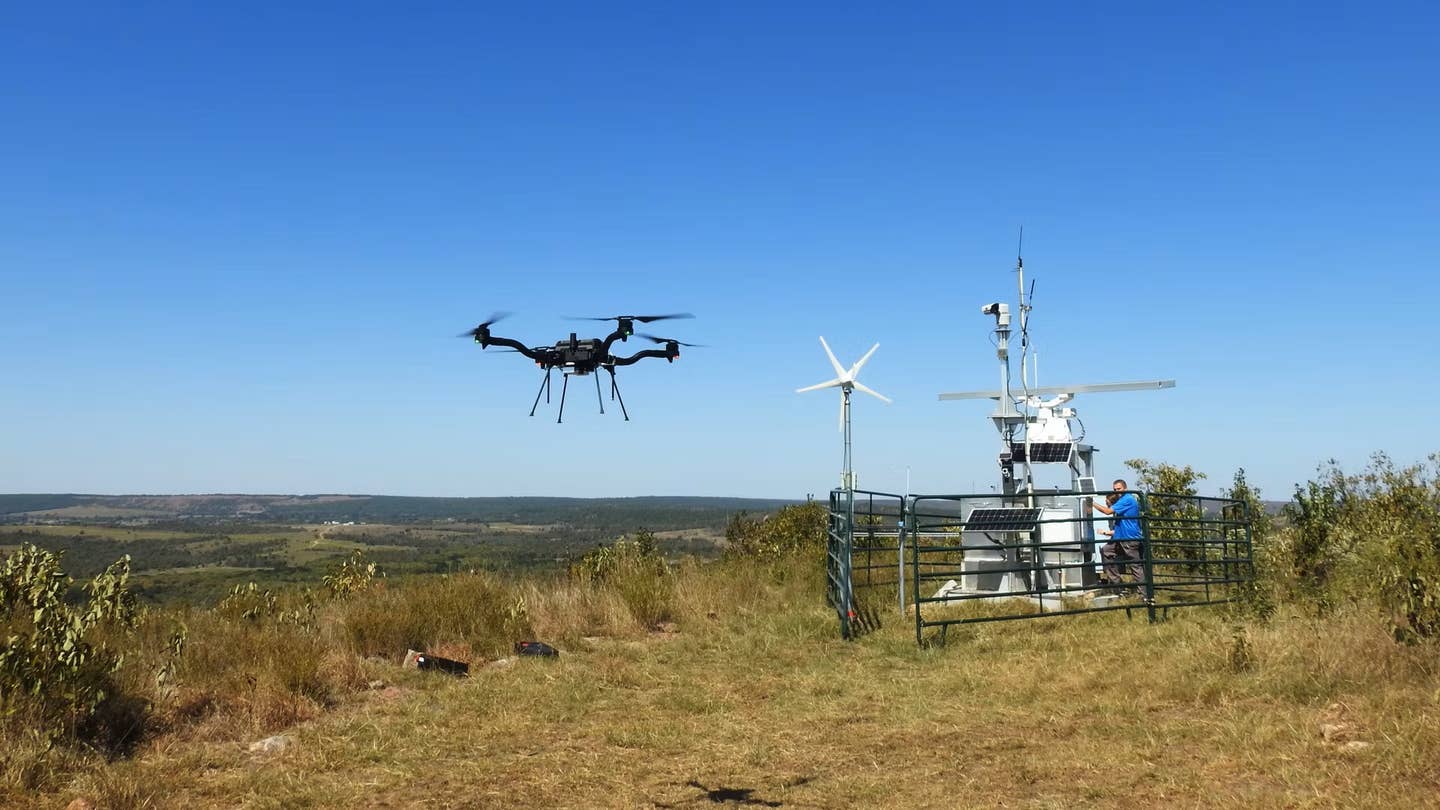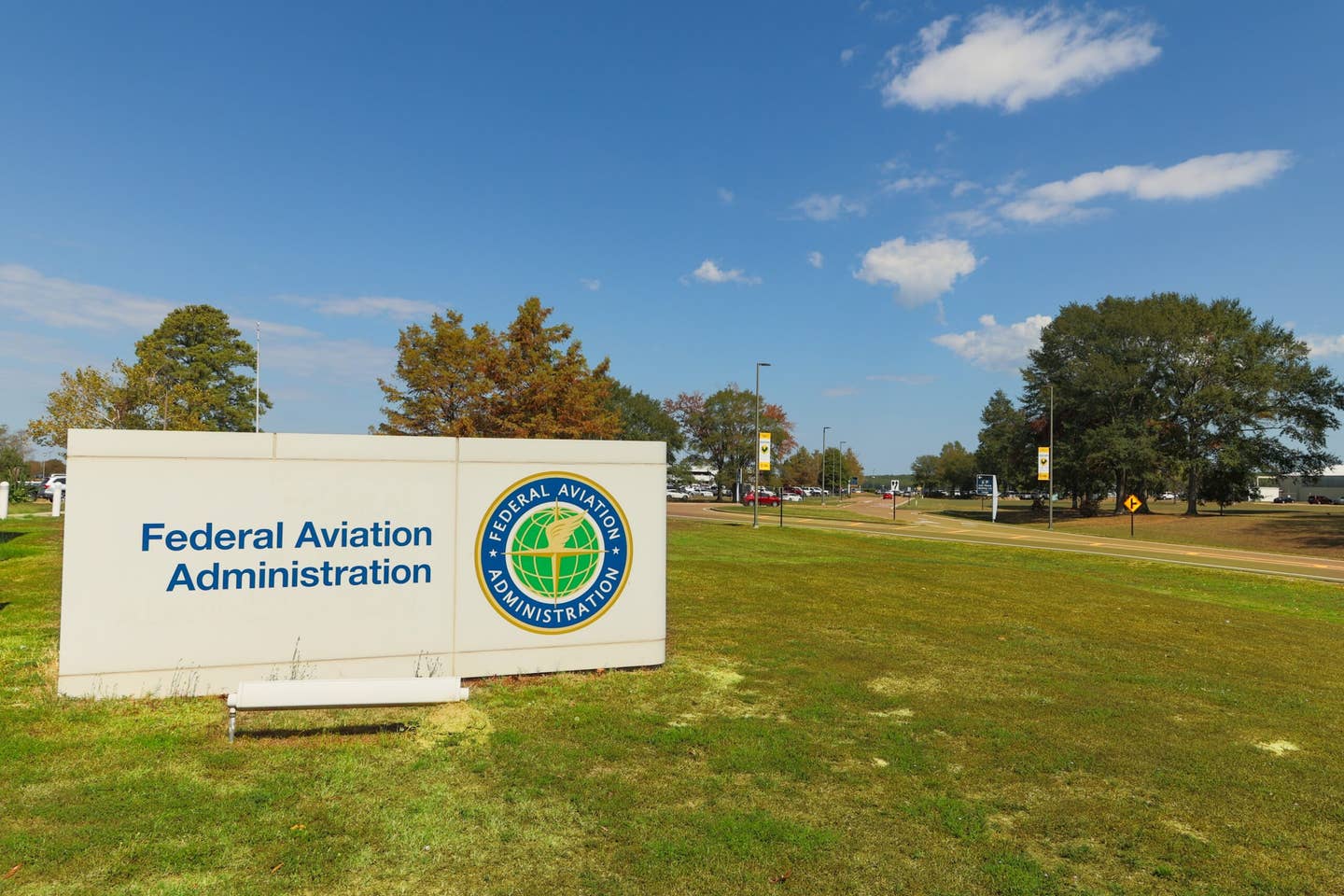Choctaw Nation UAS Test Site, uAvionix Launch FCC-Authorized Operations
Landmark approval permits BVLOS operations using C-band radio frequencies, which may soon be used solely for UAS.

At the Choctaw Nation Emerging Aviation Technology Center, UAS take flight under uAvionix control. [Courtesy: uAvionix]
On Native American territory in southeastern Oklahoma, unmanned aircraft systems (UAS) stakeholders are charting the future of the industry.
The Choctaw Nation of Oklahoma (CNO) Beyond Program is one of eight FAA-designated sites dedicated to testing beyond visual line of sight (BVLOS) drone operations. This week CNO and its partner, uAvionix, launched FCC-approved BVLOS operations using uAvionix’s SkyLink C-Band Command and Control (C2) airborne radios.
That’s a lot of fancy terminology. But it boils down to this: CNO and uAvionix are the first entities to fly BVLOS with C-band C2 under FCC approval, which is a big deal given the agency's recent proposal to dedicate C-band frequencies exclusively to UAS.
“The FCC today proposed rules to enable wireless communications for UAS use in the 5030-5091 MHz band and sought comment on whether measures are necessary to facilitate such use on flexible-use wireless networks,” the agency said in a press release. “UAS today primarily operate under unlicensed and low-power wireless communications rules or experimental licenses.”
Essentially, the partners are testing a system that may soon become the standard for all drones.
Since 2017, the Choctaw Nation has coordinated with the FAA—first through the UAS Integration Pilot Program (UAS IPP) and later through Beyond—to test drone technology on a 44,500-acre parcel of land. Tribal leaders were even asked to participate in the agency’s BVLOS Advisory Rulemaking Committee, a set of proposed rules developed collectively by UAS stakeholders.
And James Grimsley, CNO’s executive director of advanced technology initiatives, is serving on the FAA’s Advanced Aviation Advisory Committee.
Shortly after CNO began testing under the UAS IPP, uAvionix signed on as a partner in 2018. About three years later, the avionics technology provider received FAA approval to test SkyLink C-band radios and expand deployments of SkyLine, the firm’s cloud-based C2 software infrastructure, to the Northern Plains UAS Test Site in North Dakota—and beyond.
After completing a successful first flight with SkyLink C-band technology at Northern Plains in December 2021, uAvionix would spend the next year and change integrating its SkyLine network into CNO’s massive testing ground. Then, it obtained two key FAA approvals that opened up Northern Plains and CNO to BVLOS flights using its hardware and software.
Now, the partners are taking their operations to new heights with FCC approval, coordinated with the FAA.
“[C-band] vastly extends the range of operations from traditionally used frequencies because the FCC allows for higher power transmitters,” Christian Ramsey, managing director of uAvionix, told FLYING. “For example, we have tested our C-band radios to ranges exceeding 100 miles from a single ground transmitter. This is simply not possible with existing frequencies because of a significant cap on transmit power.”
Previously, the CNO test site had relied on point-to-point radio transmissions between a ground operator and aircraft. But the FCC approval will allow uAvionix to create a coverage network accessible to any aircraft in range. And with SkyLine, tasks like fleet management, detect-and-avoid, and roaming between radio networks will all be automated by the system.
“The FCC approval is limited to the use of a specific frequency, in this case C-band (5060-5091 MHz) for command and control,” Ramsey explained.
That frequency lies within the range (5030-5091 MHz) the FCC has proposed reserving for UAS operations. Most current UAS operate on public spectrum frequencies such as 4G, industrial, scientific and medical (ISM) bands, or even wi-fi. But those frequencies have limited range and are more congested, increasing the risk of a lost C2 link during BVLOS flight.
“This latest FCC approval is a critical step for the industry as we move toward ubiquitous BVLOS operations, and will not only support our Choctaw Nation efforts, but also the industry at large,” Grimsley said in a statement.
With all systems a go, CNO and uAvionix are now opening the test site to businesses interested in scaling up BVLOS operations. Their pitch? Flying under C-band frequencies will aid companies in applying for FAA waivers—particularly for scenarios such as package delivery and medical resupply—because it shields operations from outside interference, such as other aircraft.
The FCC has yet to designate C-band frequencies exclusively for UAS. But the agency has now had time to receive and reply to public comments about the proposed rule, which should guide it toward a final decision in the coming months.

Sign-up for newsletters & special offers!
Get the latest FLYING stories & special offers delivered directly to your inbox






